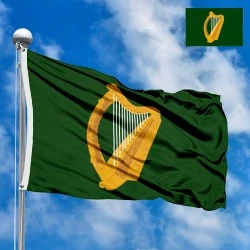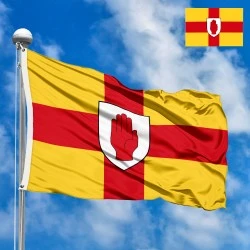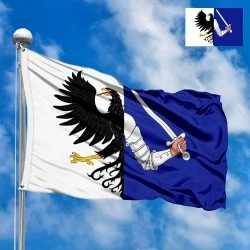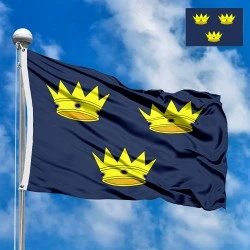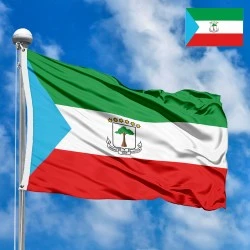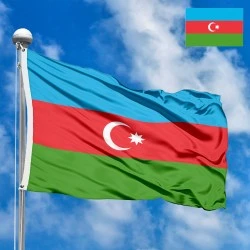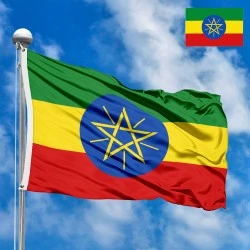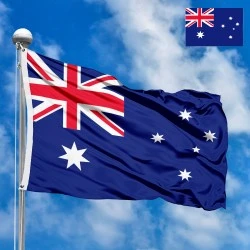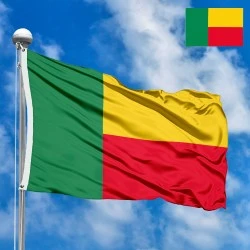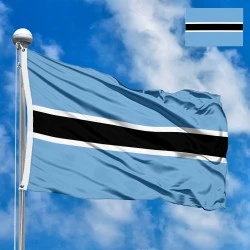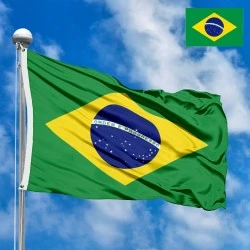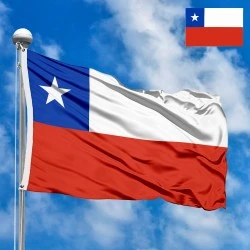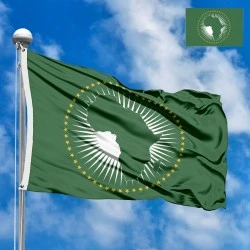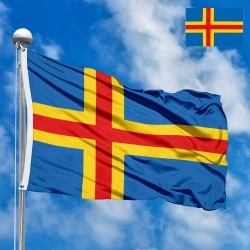- All Flags
- Flags of Countries by Continent
-
Flags of Organizations
- Flags of UN countries
- Flags of the European Union countries
- Flags of NATO countries
- Flags of the countries of the Organization of Islamic Cooperation
- Flags of the countries of the Organization of American States
- Flags of the Arab League countries
- Flags of the African Union countries
- Flags of the countries of the Union of South American Nations
- Flags of the Commonwealth of Nations
- Flags of the countries of the Secretariat of the Pacific Community
- Flags of the Nordic Council countries
- Flags of the Caribbean Community
- Flags of the countries of the Association of Southeast Asian Nations
- Flags of the East African Community
- Flags of the countries of the Organization of Turkic States
- LGBT Community Flags
- Historical Flags
- Ethnic Flags
- Flags of the USA (states)
Description
The Flag of the Four Provinces of Ireland is not an official state flag of the Republic of Ireland, nor is it formally recognized by the United Kingdom as a flag for Northern Ireland. Instead, it is a deeply significant and widely recognized cultural, historical, and sporting emblem that represents the entire island of Ireland. It is composed of the banners or arms of the four traditional Irish provinces: Ulster, Munster, Leinster, and Connacht, quartered to form a single flag. This flag is commonly seen at sporting events involving all-Ireland teams (such as rugby, cricket, or hockey) and in contexts that aim to represent the island as a unified geographical and cultural entity, transcending modern political divisions. While there are no strict official dimensions, it typically adheres to standard flag ratios, such as 1:2 or 2:3, and the four quadrants are usually of equal size.
Arrangement of Elements: A United Quadrilogy The flag is quartered, meaning it is divided into four equal sections, each representing one of Ireland's historic provinces. The arrangement is traditionally as follows when viewed from the hoist (the side attached to the flagpole):
-
Upper-left (hoist) quadrant: Ulster.
-
Upper-right (fly) quadrant: Munster.
-
Lower-left (hoist) quadrant: Connacht.
-
Lower-right (fly) quadrant: Leinster.
This specific arrangement allows each province to hold a prominent position within the unified design, symbolizing their collective identity as parts of the whole island of Ireland.
Colors and Symbolism of Each Provincial Banner:
Each quadrant displays the traditional banner or coat of arms associated with that province, each with its own distinct colors and symbolism:
-
Ulster (North-West Quadrant):
-
Colors: Gold/Yellow field with a Red Hand of Ulster on a White shield, surrounded by a gold or yellow star, and a crown above the hand.
-
Symbolism: The "Red Hand of Ulster" (Lámh Dhearg Uladh) is the most prominent and ancient symbol, dating back to pre-Christian Gaelic mythology and associated with the O'Neill clan. It represents bravery, strength, and defiance. The red cross on a yellow field is derived from the de Burgh family arms, powerful Anglo-Norman lords in Ulster. The yellow star and crown are later additions, often associated with a loyalist interpretation of Ulster identity, but the core Red Hand remains a widespread symbol of the province for all traditions.
-
-
Munster (North-East Quadrant):
-
Colors: Blue field with three Gold/Yellow Antique Crowns.
-
Symbolism: The three crowns on a blue field are very old symbols, dating back to the 13th century and associated with the ancient Kingdom of Munster. Their exact meaning is debated, but they are often linked to the three historic dioceses of Munster or the concept of the "Kings of Munster." The blue background is a traditional color in Irish heraldry, often associated with sovereignty.
-
-
Connacht (South-West Quadrant):
-
Colors: Divided vertically (per pale) into White and Blue. On the white half, a black demi-eagle (half-eagle) facing the hoist; on the blue half, a white arm (or mailed arm) holding a sword, emerging from the hoist.
-
Symbolism: This intricate design is derived from the Burke (de Burgh) family, powerful Norman lords who became Gaelicized and dominant in Connacht. The demi-eagle might be a European heraldic adoption, while the armed hand holding a sword is a classic symbol of readiness, defense, and martial prowess, reflecting the historical struggles and independence of the region.
-
-
Leinster (South-East Quadrant):
-
Colors: Green field with a Gold/Yellow Harp.
-
Symbolism: This is arguably the most famous and widely recognized Irish symbol globally, often used interchangeably with the national identity. The harp, particularly the Brian Boru harp, is Ireland's official national emblem. The green background is synonymous with Ireland, often referred to as the "Emerald Isle." The harp symbolizes Irish culture, music, and national identity, while the green represents the lush landscape and the spirit of Irish nationalism.
-
History of the Flag's Creation and Adoption: An Evolving Symbol The concept of a flag representing the four provinces collectively emerged from a desire to visually unify the island, particularly in contexts where a single Irish identity, rather than just the Republic of Ireland, was to be emphasized. While individual provincial banners have ancient origins rooted in medieval heraldry and clan histories, the combined Flag of the Four Provinces is a more modern construct. Its popularization largely stems from its adoption by all-Ireland sporting organizations, such as the Irish Rugby Football Union (IRFU), Cricket Ireland, and Irish Hockey. These bodies govern their sports across both the Republic of Ireland and Northern Ireland, requiring a symbol that is inclusive of all players and supporters from the entire island, without being explicitly tied to the political symbols of either the Republic or the UK.
There isn't a single definitive "creation date" or formal "adoption" ceremony for this combined flag by a governmental body, as it's not a sovereign emblem. Instead, it gained widespread acceptance and use organically over the 20th century, becoming a de facto symbol of all-island unity in non-political, particularly sporting, contexts. Its strength lies precisely in its ability to transcend the political divide, offering a common visual identity for people from diverse backgrounds across Ireland.
Country and Region Context: The Provinces of Éire Ireland (Éire in Irish) is an island located in the North Atlantic. Politically, it is divided between the Republic of Ireland (a sovereign state covering about five-sixths of the island) and Northern Ireland (a constituent country of the United Kingdom, located in the northeast of the island). The four traditional provinces—Ulster (Ulaidh), Munster (An Mhumhain), Leinster (Laighin), and Connacht (Connachta)—are historical and cultural divisions that predate the modern political border.
-
Ulster: The northernmost province, it is unique because six of its nine counties form Northern Ireland, while the other three (Cavan, Donegal, Monaghan) are part of the Republic of Ireland. This dual political identity makes Ulster's representation particularly sensitive and symbolic of the island's complex history.
-
Munster: Located in the southwest, this province is entirely within the Republic of Ireland and is known for its strong Gaelic traditions and scenic beauty.
-
Leinster: Situated in the east, this is the largest and most populous province, home to the capital city, Dublin. It is also entirely within the Republic.
-
Connacht: In the west, Connacht is known for its rugged landscapes, strong Irish language traditions, and historical remoteness. It is entirely within the Republic.
The Flag of the Four Provinces, therefore, serves as a powerful visual reminder of this unified geographical and historical island, irrespective of contemporary political boundaries, emphasizing shared heritage and identity.
Interesting Facts: Beyond the Official Flags
-
Not a National Flag: It is crucial to understand that this flag is not the national flag of the Republic of Ireland (which is the green, white, and orange tricolor) nor is it an official flag of Northern Ireland. Its power lies in its unofficial, inclusive nature.
-
Sporting Unity: The flag is most prominently displayed and recognized in the context of all-Ireland sports. When teams like the Ireland national rugby union team play, composed of players from both the Republic and Northern Ireland, this flag is flown alongside or instead of the national flags, symbolizing the unity of the island in that sporting arena.
-
Historical Evolution of Provincial Arms: The coats of arms for each province, particularly Ulster and Connacht, have evolved over centuries, with various interpretations and slight modifications. The versions seen on the Four Provinces Flag are widely accepted modern representations.
-
Symbol of Shared Heritage: For many, the flag represents a shared Irish identity that transcends sectarian or political divides, highlighting the long history and cultural bonds that unite people across the island. It's a symbol of heritage rather than a political statement.
-
Absence of a Crown: Unlike some historical versions of provincial flags (e.g., Ulster sometimes appeared with a crown associated with loyalist symbols), the unified Four Provinces flag typically omits crowns on the Ulster and Munster arms to maintain political neutrality and broad acceptance. The three crowns on Munster's arms are distinct from a royal crown and are ancient symbols of that province.
In the demonstration images, full-size flags are shown with proportions of 2:3, and hand-held flags with proportions of 1:2.
Donation
Download
Completely free for commercial and non-commercial use (public domain).
You can freely use them in your news magazines, websites, software, mobile applications.
We appreciate a backlink to https://flagssite.com
Raster files - Flag of the four provinces of Ireland (PNG, JPG)
 Waving flag
Waving flag
- PNG format (transparent background), 72dpi, dimensions in Pixels (px), aspect ratio 3:4.
- 15х20 px
- 30х40 px
- 60х80 px
- 120x160 px
- 240x320 px
 Sizes:
Sizes:
"v15" - image size (by height); if necessary, replace with available: v15, v30, v60, v120, v240.
!!! For resizing, use the Latin (eng) keyboard layout.
<img src="https://flagssite.com/flags/v15/20269.png" alt="Flag of the four provinces of Ireland">
 Round flag
Round flag
- PNG format (transparent background), 72dpi, dimensions in Pixels (px), aspect ratio 1:1.
"d15" - image size (diameter); if necessary, replace with available: d15, d30, d60, d120, d240.
!!! For resizing, use the Latin (eng) keyboard layout.
<img src="https://flagssite.com/flags/d15/20269.png" alt="Flag of the four provinces of Ireland">
 Rectangular flag 2:3
Rectangular flag 2:3
- JPG format, 72dpi, dimensions in Pixels (px), aspect ratio 2:3.
"h30" - image size (by height); if necessary, replace with available: h15, h30, h60, h120, h240, h360, h480.
!!! For resizing, use the Latin (eng) keyboard layout.
<img src="https://flagssite.com/flags/h30/20269.jpg" alt="Flag of the four provinces of Ireland">


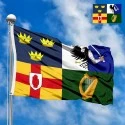
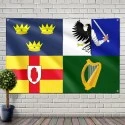
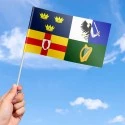

 Sizes:
Sizes:
 Sizes:
Sizes:
